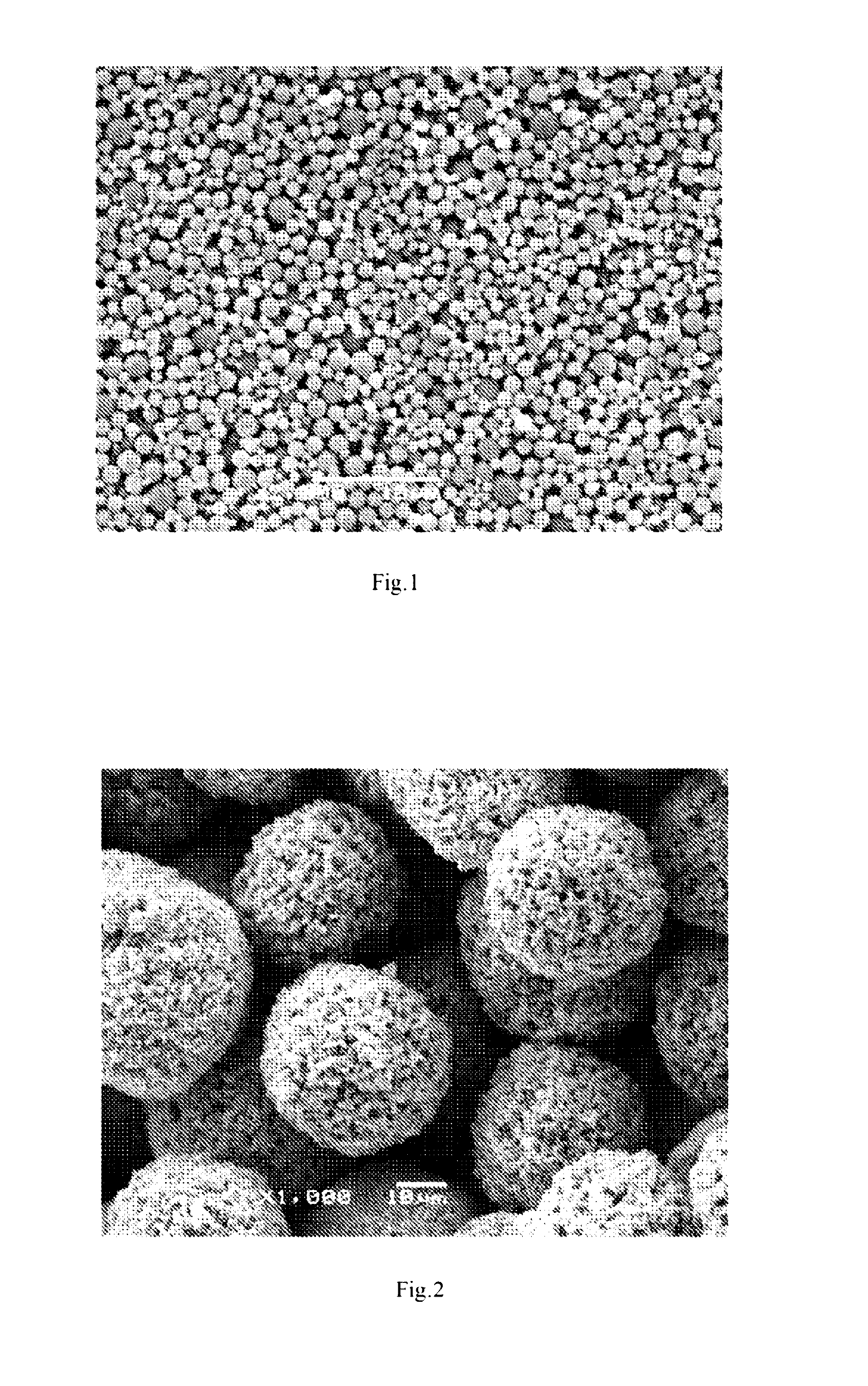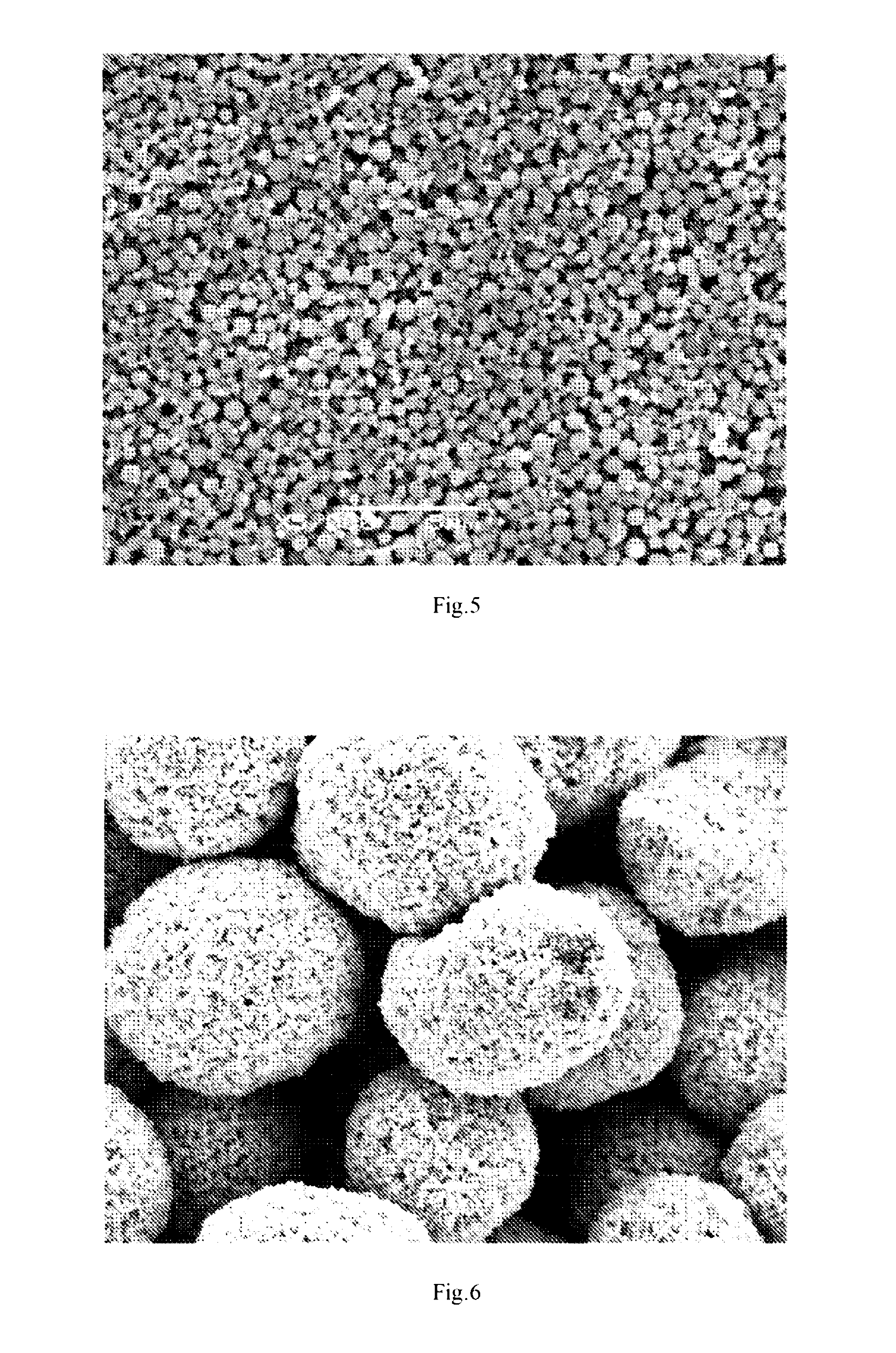Metal powder for 3D printers and preparation method for metal powder
a 3d printer and metal powder technology, applied in the field of 3d printer raw materials, can solve the problems of restricting the development of metal 3d printing technology in china, high price of raw materials and equipment, and high cost, and achieves low oxygen content, high degree of sphericity, and uniformity.
- Summary
- Abstract
- Description
- Claims
- Application Information
AI Technical Summary
Benefits of technology
Problems solved by technology
Method used
Image
Examples
embodiment i
[0032]A physical vapor deposition method is used: dissolving a copper-based alloy as a raw material in a crucible, wherein gas (hydrogen, argon, nitrogen and etc.) enters from a gas inlet pipe in a plasma transfer arc torch and is transferred into plasma through an external power supply to generate a plasma transfer arc between the crucible and the plasma transfer arc torch (i.e., the lower end of the plasma transfer arc torch generated by the plasma transfer arc torch is connected to a metal liquid level in the crucible); evaporating and vaporizing the metal through the plasma transfer arc torch; passing through a. quenching pipeline by metal vapor and adding inert gas or nitrogen at room temperature into the metal vapour at a high speed to reduce the temperature of the metal vapour to be lower than 300° C. to obtain the copper-based alloy powder with the average grain size of 1.0 micron (FIG. 3) (the physical vapor deposition method is a conventional method in the industry, and is...
embodiment ii
[0033]The titanium-based alloy powder (FIG. 5) with the average grain size of 0.5 micron produced by the physical vapor deposition method and water are prepared into the metal powder shiny with the solid liquid ratio of 2:1. The organic adhesive (ethyecellulose) accounts for 1.5% by weight of the solid. The metal slurry is prepared into spherical metal powder through the centrifugal spray granulator. The rotating speed of the centrifugal spray granulator is controlled at 12000 r / m, the inlet temperature of dry air of the centrifugal spray granulator is 350° C. and the outlet temperature is 120° C., and the flow of the dry air is 250 Nm3 / h. The feeding speed of the metal powder slurry is 10 kg / h. The dried and granulated metal powder is collected through a cyclone and ultrafine metal powder is collected through a filter bag. The metal powder collected by the cyclone is graded by a vibrating sieve to obtain the metal powder with the average grain size of 45 microns (FIG. 6). The metal...
embodiment iii
[0034]The nickel-based alloy powder (FIG. 7) with the average grain size of 0.25 micron produced by the physical vapor deposition method and ethanol are prepared into the metal powder slurry with the solid liquid ratio of 1:1. The organic adhesive (the metallurgical mineral powder pellet adhesive produced by Baoding Jingsu Biotechnology Co., Ltd. with the model number of HY-1) accounts for 1.5% by weight of the solid. The metal slurry is prepared into spherical metal powder through the centrifugal spray granulator. The rotating speed of the centrifugal spray granulator is controlled at 25000 r / m, the inlet temperature of dry air of the centrifugal spray granulator is 200° C. and the outlet temperature is 90° C., and the flow of the dry air is 220 Nm3 / h. The feeding speed of the metal powder slurry is 10 kg / h. The dried and granulated metal powder is collected through a cyclone and ultrafine metal powder is collected through a filter bag. The metal powder collected by the cyclone is ...
PUM
| Property | Measurement | Unit |
|---|---|---|
| Grain size | aaaaa | aaaaa |
| Grain size | aaaaa | aaaaa |
| Temperature | aaaaa | aaaaa |
Abstract
Description
Claims
Application Information
 Login to View More
Login to View More - R&D
- Intellectual Property
- Life Sciences
- Materials
- Tech Scout
- Unparalleled Data Quality
- Higher Quality Content
- 60% Fewer Hallucinations
Browse by: Latest US Patents, China's latest patents, Technical Efficacy Thesaurus, Application Domain, Technology Topic, Popular Technical Reports.
© 2025 PatSnap. All rights reserved.Legal|Privacy policy|Modern Slavery Act Transparency Statement|Sitemap|About US| Contact US: help@patsnap.com



